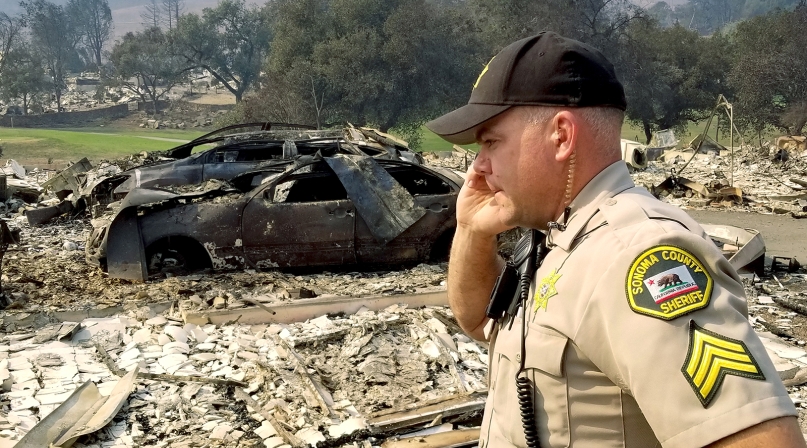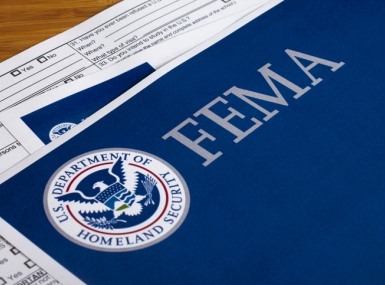Fires wreak havoc in California’s wine counties

Calif. wine country fires "by far... the biggest catastrophe we’ve ever faced"
It was about 1:30 a.m. Oct. 9 when Carmel Angelo, Mendocino County, California CEO, was notified by the sheriff’s office that a deadly wildfire was threatening the community.
“As I was talking with our captain in the sheriff’s office, who was on the ground notifying neighbors and closing roads, he was trying to apprise me of the fire,” Angelo said. “It was quite a telling phone call, if you can imagine at 2 a.m., hearing the sheriff’s captain tell people they need to evacuate their homes.”
More than 20 wildfires whipped up by heat, high winds and a lack of humidity started Columbus Day weekend, killing at least 31 people in northern California’s wine country.
See More
Dashboard camera video from a Sonoma County sheriff's deputy
“By far, this was the biggest catastrophe we’ve ever faced,” Napa County Supervisor Ryan Gregory said.
In Sonoma County, just south of Mendocino, Supervisor Susan Gorin discovered her home burned to the ground Oct. 10. She had been out of town for the birth of a grandchild and tried to return, but her neighborhood was evacuated.
Some of the challenges, Sonoma County Supervisor James Gore said, were “getting quick, respectable, verified information” out to the public, including in Spanish, and getting it out in a number of ways — to the media, and on social media.
Gore made room in his home for two families who lost their homes in the fires, he said. He was able to return after facing an evacuation himself Oct. 11.
The fires burned more than 200,000 acres across the region; firefighters were still battling the fires late last week.
Gov. Jerry Brown (D) issued emergency proclamations for Napa, Sonoma, Yuba, Butte, Lake, Mendocino, Nevada and Solano counties. FEMA approved grants to help pay for staffing and equipment.
The worst of the fires were:
- Mendocino County: At least eight deaths; 21,000 acres burned
- Napa County: At least two deaths; 60,000 acres burned
- Sonoma County: At least 17 deaths; 27,000 acres burned
- Yuba County: At least four deaths; 11,500 acres burned.
Three days into it, the counties were still in emergency mode. “We’ve been doing evacuations all day yesterday and all through the night,” said Sonoma County Sheriff Robert Giordano Oct. 11. “If you have a place to go, go.”
The county’s missing person list was up to 900 by Oct. 12, with 437 of those accounted for, but “we think some of those are new evacuations,” the sheriff said, especially people who can’t make phone calls because their phones weren’t charged or cell phone service was spotty.
In Sonoma County, where at least 17 people died, 24 evacuation shelters were set up by Oct. 10. The Sonoma Raceway opened 50 acres of campground and the fairgrounds were being used as a shelter for large animals. The county seat, Santa Rosa, was devastated by the fires — a Kmart, Applebee’s, Hilton and many other businesses and homes were burned. “We had 20,000 acres burn in 12 hours,” said CalFire Capt. Richard Cordova. “It’s pretty much unheard of.”
In Mendocino County, 90 structures were lost including 50 dwellings, and a county-owned cell tower, Board Chair John McCowen said.
The night the fires started, shortly after 2 a.m., McCowen was busy helping set up the county’s first emergency shelter. “I could see the landscape…the full-blown fire spread across miles…I knew instantly this was going to be a terrible situation for many people,” he said.
Mendocino County Supervisors Carre Brown and Georgeanne Croskey, were also evacuated from their homes.
In Mendocino, residents were notified of evacuations by reverse 911 calls; those with landline phones were automatically notified; those with cell phones were notified if they had signed up for the service. Officials also went door to door.
“This is what you would really call a rapid response,” Angelo said. “Our sheriff’s deputies and CalFire worked very quickly. They were trying to save lives and get animals out of harm’s way. That fire was moving quickly. They were out there doing boots on the ground.”
County employees set up the EOC at the sheriff’s training center in Ukiah, the county seat; it was up and running by 5 a.m. The county and the sheriff’s office posted information to social media, set up a phone bank, a 211-phone service and held daily press conferences.
“We had public employees who lost everything they had and they still showed up for work to help evacuate, staff shelters, emergency operations,” McCowen said. “People sometimes forget the role that a public employee can play, even if they’re not a first responder by profession.”
Attachments
Related News

States file lawsuit challenging FEMA’s new rules on emergency management grants
On November 4, a coalition of 12 states filed a lawsuit against the U.S. Department of Homeland Security (DHS) and the Federal Emergency Management Agency (FEMA), alleging that recent changes to key emergency management grants are unlawful and could disrupt state and local preparedness efforts.

County Countdown – Nov. 4, 2025
Every other week, NACo's County Countdown reviews top federal policy advocacy items with an eye towards counties and the intergovernmental partnership.
FEMA bill staffers offer insights into reform effort
NACo Intergovernmental Disaster Reform Task Force heard from staffers who helped shape a bill that would make dramatic changes to the Federal Emergency Management Agency.
